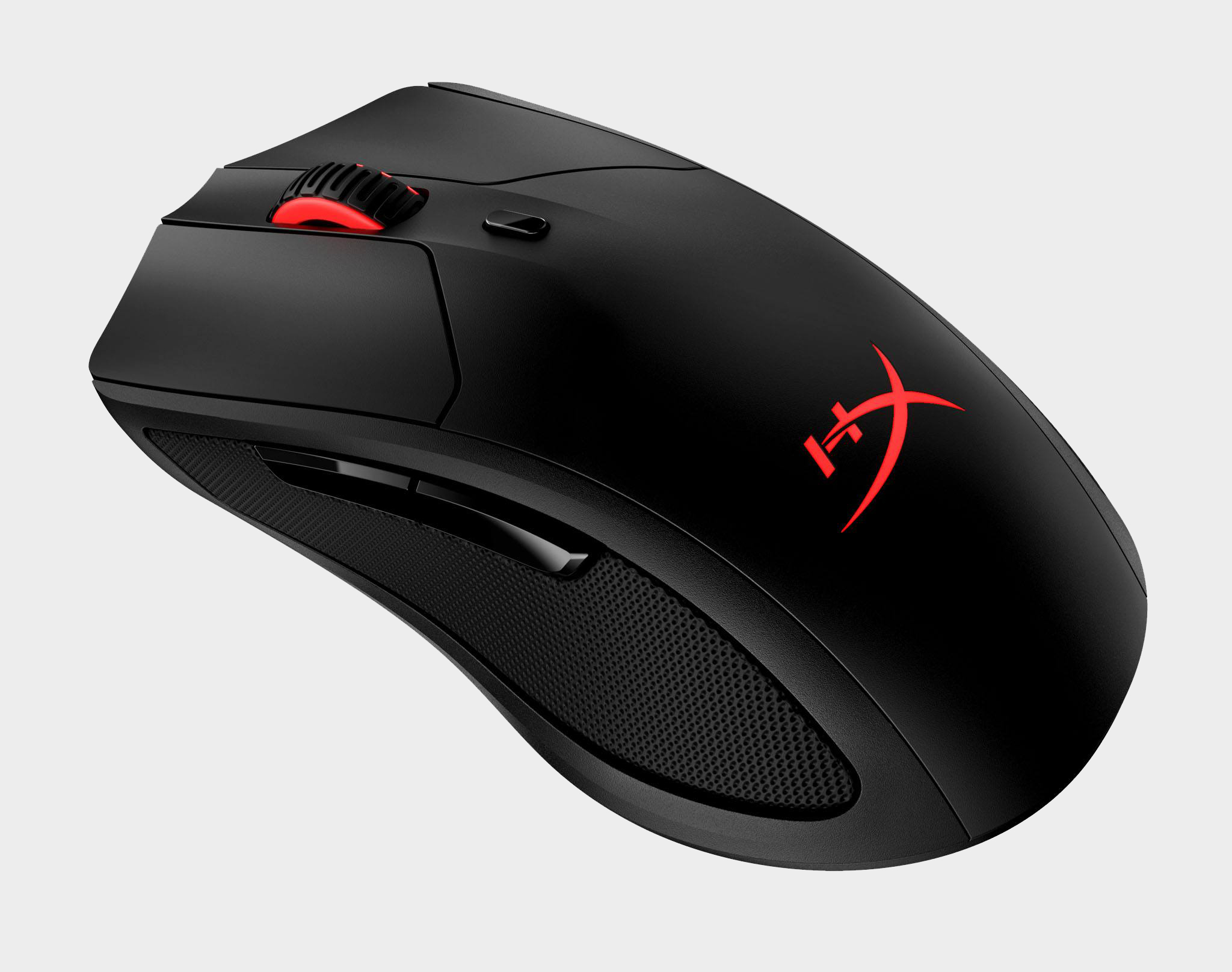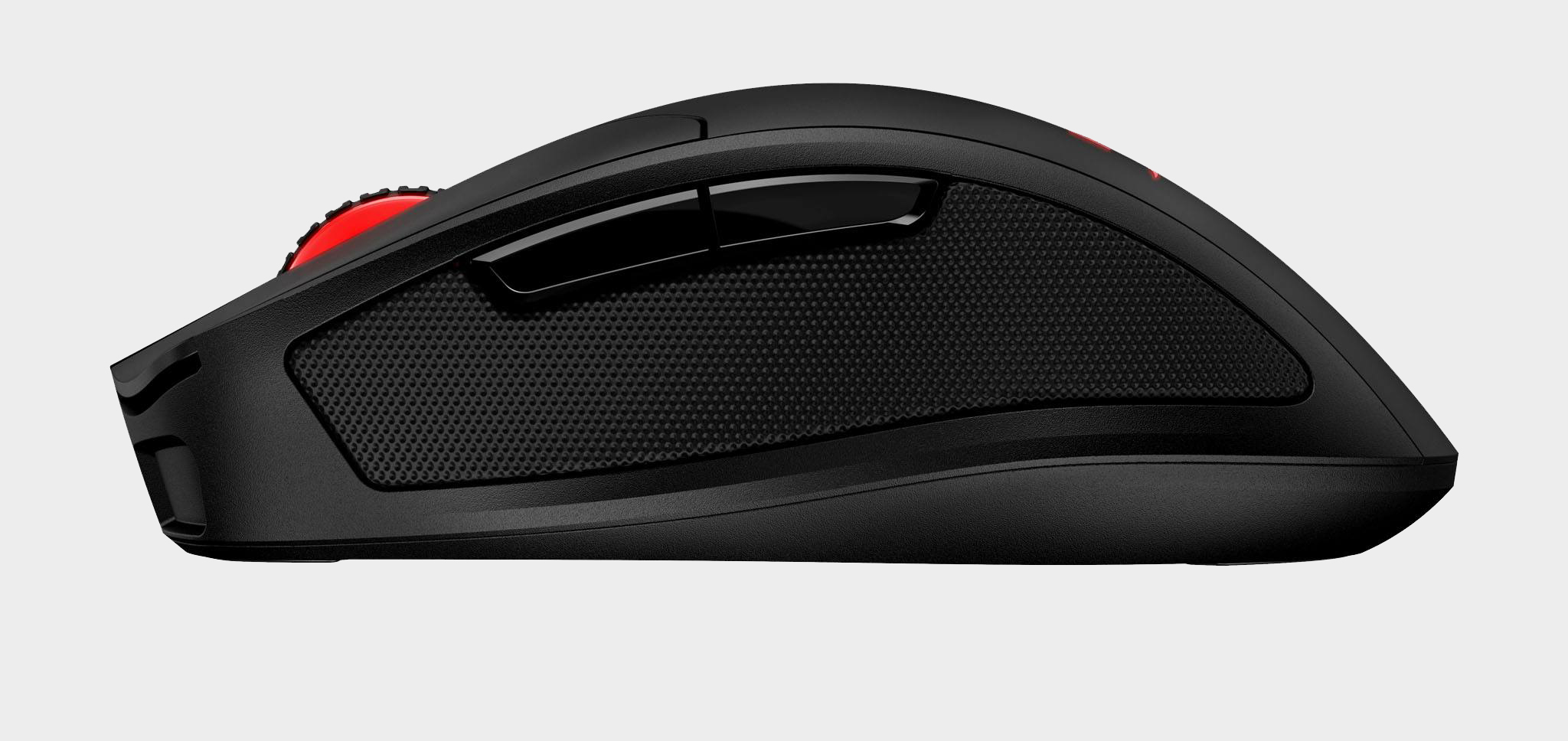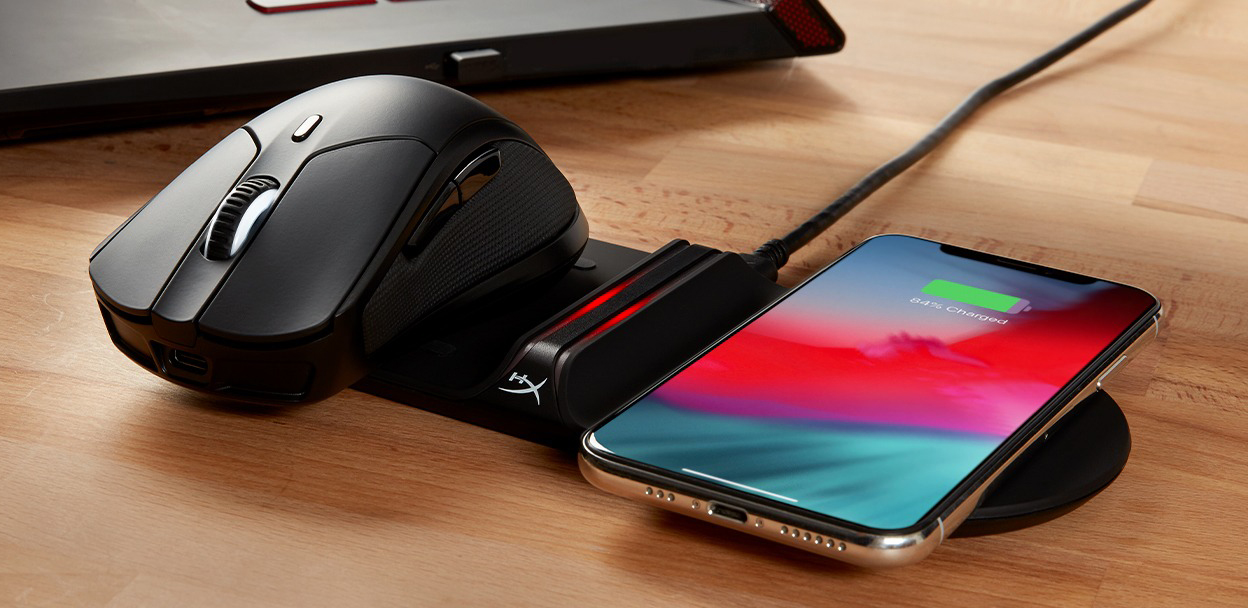Our Verdict
A reliable, well-built all-rounder that will serve you well in any game—but don’t buy it until Ngenuity is fixed.
For
- Qi charging, which is rare
- Solid feel in the hand
- Sensor and wireless tech never hitch
Against
- Buggy NGenuity PC software ruins the experience
- Only two programmable side buttons
- Much pricier in the UK than US
PC Gamer's got your back
For most PC gamers looking for a wireless mouse, the HyperX PulseFire Dart appears to be a solid, if unspectacular, bet. It doesn’t boast many programmable buttons, but what buttons it has feel solid and comfortable to click repeatedly. Neither its wireless tech nor its sensor are as good as the industry’s best, but they’re still fast and accurate, and will play your favourite games without a hitch. But it has two standout features: one excellent, and one that is, unfortunately, horrible.
On the plus side, you can charge it wirelessly using any Qi charger, which puts it in a select group of gaming mice. The letdown is that its PC software NGenuity—a hub that lets you monitor and tweak battery, lighting, and sensitivity options—is so broken that it’s barely functional and makes living with the mouse a pain.
Let’s start on the high note: most mice that can charge wirelessly use tech specific to a manufacturer, such as Razer or Logitech, but thanks to Qi you can charge the Dart with any Qi charger you have at home, including third-party mouse pads. At $100/ £110, it’s cheaper than most wirelessly charging mice, especially when you take into consideration the extra cost of buying a manufacturer-specific charger.
While Qi is more affordable than proprietary tech, it requires you to leave your mouse in a specific spot (on a Qi pad) to charge it, unlike Razer and Logitech’s wireless charging, which powers the mouse while you use it. But I’d argue the flexibility of Qi, and the reduced cost, is worth it, and you get enough hours out of the Dart that you don’t need to constantly charge it. I used HyperX’s own Qi Chargeplay charging base, which never failed to recognise the mouse, although it was impossible for me to verify how quickly it was charging thanks the issues with NGenuity (which I’ll dig into later).
While it’s more affordable than Razer or Logitech’s wirelessly charging mouse, in US pricing the Dart is slightly more expensive than Corsair’s Dark Core RGB SE, which has similar specs as well as Qi charging. When it comes to UK pricing, it’s significantly more expensive, highlighting an imbalance between the two currencies; it costs $100, but in the UK you’ll shell out £110, the equivalent of more than $140, making it far less attractive.
The Dart’s sensor is standard fare for this price point: it goes up to 16,000 DPI, and tracks at 450 IPS. In practice, that means it tracked consistently, accurately, and without a hitch, whatever shooter I threw at it. I never encountered any stuttering or abnormal movements in-game. The wireless tech’s 1ms response time is considerably less snappy than other mice (Razer’s latest wireless mice boast an industry best 0.2 ms), but I never noticed any delay while playing, which is the most important thing: it felt snappy, lagless, and never lost connection.
It’s robustly built, too. The left and right buttons are sturdy and—unlike some Razer mice I’ve tested recently—show no signs of side-to-side waggle, which means they’re unlikely to come loose. The two side mouse buttons are a tad on the stiff side, but that’s better than them feeling soft. The cushioned pads on either side of the mouse are comfortable and grippy, and the pads on the bottom of the mouse showed no sign of wear from gliding across my mousepad, which they did smoothly.

It’s chunkier than most mice, fatter in the palm portion than I’m used to. The arch of the mouse is taller than in any other device I can remember trying, which meant it felt a little strange at first, as if it was too big for my hand, and if you have particularly small hands I’d think twice. But I quickly got used to it, and while it’s not my favourite design it was still comfortable during prolonged play sessions.
HyperX claims the Pulsefire Dart can last 50 hours on a single charge, but the company’s glitchy NGenuity software, which is still in beta, meant I couldn’t verify those claims. The software’s battery life indicator jumped around wildly. Out of the box, it dropped from full charge to 20 percent overnight. Then, without charging, it hit 50 percent. After 15 minutes of charging, it displayed 100 percent again, and then later that same day it told me I had less than 15 percent left. It did this for a week, hopping from one seemingly random number to the next.
On the rare occasions it worked, telling me the Dart was draining around 2 percent an hour, which fits in with the company’s 50-hour claim. But long battery life is pointless if you can never reliably know how much juice you have left.

That wasn’t the only time NGenuity failed me. It hung and crashed regularly. When I switched between wired and wireless connections, it listed the Dart as two separate devices. The mouse comes with three DPI settings as standard that you cycle between via a dedicated button, and you can add two extra presets, for a total of five, in NGenuity. But every time I closed the programme, it forgot these custom options, and I had to set them up again next time.
NGenuity does give you plenty of RGB lighting options, including being able to separately change the colour of the scroll wheel and the HyperX logo. That worked well, but otherwise it’s simply not up to scratch and puts a dampener on what is otherwise a solid wireless mouse. The silver lining is that it’s still in beta, and no doubt HyperX will, at some point, patch it up.
The Dart is fast, feels sturdy in the hand, and offers something few other mice can: Qi charging. But before you even think about buying it, you should wait for HyperX to get its software together.
A reliable, well-built all-rounder that will serve you well in any game—but don’t buy it until Ngenuity is fixed.
Samuel Horti is a long-time freelance writer for PC Gamer based in the UK, who loves RPGs and making long lists of games he'll never have time to play.



